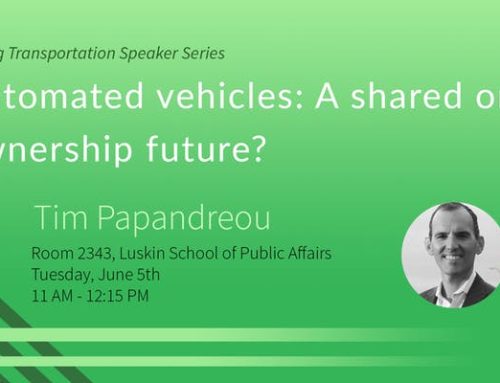By: Tim Black, UCLA Master of Urban Planning ’14
A wise person, though surely not one of the pie-in-the-sky figureheads that occupy our profession’s dominant historical narrative, once remarked, “The devil is in the detail.” And so it was amending details of the California Environmental Quality Act (CEQA) Guidelines that preoccupied me for much of the last year at UCLA and qualified as my Applied Planning Research project.
I assisted the California Governor’s Office of Planning and Research (OPR) on the rollout of Senate Bill 743, which amended the CEQA
Guidelines for the assessment of transportation impacts. Previously, transportation impacts were largely determined by the effect on automobile level of service, a metric concerned with the free-flow movement of cars while ignoring the effect on pedestrians, bicyclists, and for the most part, transit riders. A common criticism among planners was that it made dense development difficult in areas with already high levels of traffic and thus contributed to urban sprawl. The bill specifically removed automobile level of service as an appropriate CEQA metric and instructed OPR to develop an alternative. The team at OPR is still working on the final guidelines, but they have indicated that the new metric will be derived from vehicle-miles-traveled generated by the project.
This legislation has been described as a “game-changer” for CEQA, and I was fortunate to be a part of the effort. Working directly with Chris Ganson and Chris Calfree, the duo charged with drafting the revised CEQA guidelines, I traveled to Sacramento, attended key stakeholder meetings, and contributed to the ongoing discussion whenever I could. I met policymakers, policy wonks, and many consultants that interface between the two.
It was during this time, a period which I consulted literature from the Transportation and Land Use class taught here at UCLA, I truly appreciated how useful research is in implementing effective policy. Although there is an emerging literature on the effect of development on vehicle miles traveled, there was no practical model for California to adopt such standards. A survey of states with similar environmental laws revealed that California was truly taking a bold step forward in sustainability.
The experience proved to be intellectually fruitful for me as well—I submitted my review of state environmental quality acts to the 2015 Transportation Research Board’s Annual Meeting in Washington D.C. Maybe I will see you there!





